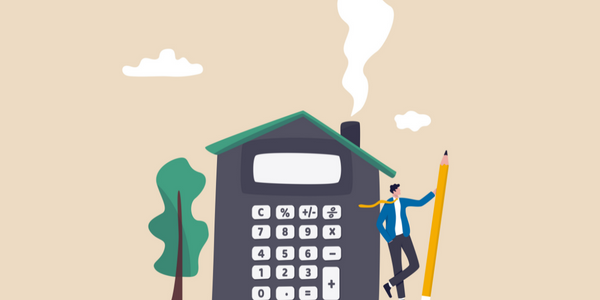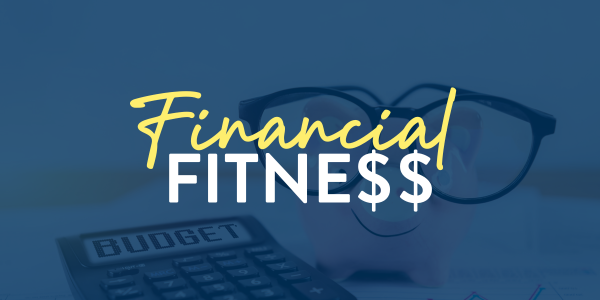
The homebuying process…where do you even start? Buying a house may be a lifetime dream of yours, but for many buyers it can feel overwhelming at first. While it may seem like a lot, our APM Loan Advisors have your back. Our 100% focus is on getting hardworking people like you into the homes they deserve.

Let’s start by breaking down the homebuying process into seven easy-to-understand steps.
1. Get Pre-Approved
Despite what you might have heard, the first step in the homebuying process isn’t securing a real estate agent. Before you can go out and start looking at homes, you need to know how much home you can afford. That doesn’t just pertain to the purchase price, but the down payment, monthly payments, and even interest rates.
An experienced loan advisor will walk you through the pre-approval process. All you have to do is supply your overall financial picture, including income, credit, and assets. We’ll then give you an idea of how much mortgage you can afford.
Mortgage pre-approval not only gives you the peace of mind of knowing your purchase price range is approved, but it strengthens your position when you’re buying a home that has multiple offers. This is because the seller will have confidence that you (and your mortgage lender) can get the deal done. In many markets, submitting your pre-approval with your offer is required.
You also have the option of getting your loan fully underwritten and approved upfront—before you even set foot in an open house. The loan approval would be contingent only on the property appraisal and clear title, putting you in a position to close quickly when the time is right.
Your loan advisor will also introduce you to different loan programs that may be applicable to you, including the FHA loan and conventional loan, among others. They will also work with you to determine which loan will work best with your financial situation and future goals so that when you make your final decisions, you’re informed and comfortable.
If you want to get a head start on the loan process, APM has you covered! Check out our 5-Step Road Map to the Loan Process.
2. Make a Priority List
Once you understand the range of home prices you should be looking at, it’s time to make a list of home priorities.
For some people buying a house, priorities may include the neighborhood, school district, or nearby amenities. For others, important factors when buying a house may be the size of the home, number of bedrooms, or age of the property. You’ll also want to consider things like whether you’re expecting a turnkey house or are looking for more of a fixer-upper.
Putting all this down on paper (or in your phone if you’re like us!) will help you see your priorities clearly before the allure of online real estate listings takes hold. After all, with limited hours in the day and an endless availability of homes to browse online, it’s important to stay focused on what matters to you.
3. Find a Real Estate Professional and Start Shopping
Remember how we said securing a real estate agent wasn’t the first step in the homebuying process? Instead, it’s Step 3. A real estate professional has access to more homes than commercially published online listings, and they can facilitate viewings, negotiate on your behalf, and handle the legal contracts that protect your interests.
Of course, you can buy a home without the help of a real estate professional, but you risk losing out on the many benefits of having a licensed and experienced agent on your side. Like a mortgage lender, a real estate professional can also help you determine your budget. Just because you’ve been pre-approved for a certain range of home loans doesn’t mean you have to buy at the upper level of that limit.
Read our Preparing for Homeownership Checklist to understand how the homebuying process might look for you. After you’ve got all this taken care of, you can start touring homes!
4. Present a Pre-Approval Letter—or a Fully Underwritten Loan Approval
When you find the home of your dreams—the one that perfectly matches up with your mortgage budget and your priority list—you’ll want to act quickly. You also want to make sure your offer is strong and attractive to the seller. That means presenting a pre-approval letter, or (better yet) a full loan approval, with your offer.
Your real estate agent will typically present your offer to the home seller and their real estate agent. The seller may accept, reject, or make a counteroffer. Counteroffers are common, as are the negotiations that follow, until you and the seller can agree on the purchase price, terms, and conditions.
Your real estate agent will likely make your offer contingent on a home inspection, and they may even recommend a home inspector. If structural damage or repairs are needed, there may be some negotiations as you finalize the terms and conditions of this sale.
Be prepared to pay an earnest-money deposit on your home when your offer is accepted. The rest of your down payment and closing costs will be due before your loan is closed and your documents are signed in escrow.
5. The Mortgage Loan Process
If you got pre-approved before making an offer, you’re one step ahead of the game when it comes to the home loan portion of the homebuying process. Your pre-approved application will simply be updated with the property address as all documentation is confirmed.
If you didn’t get pre-approved, now is the time to fill out your home loan application. There is some documentation that is required in most instances:
- Photo ID
- Pay stubs
- Proof of income
- Tax returns
- Employment history
- Information on debts and assets
You can find a detailed list of what documents may be required by checking out our Mortgage Documents Checklist, but it’s important to know that your loan advisor will give you a comprehensive list based on your information and the loan program you’ve selected.
Your loan advisor will go over your loan program options, and together you’ll select the loan program that fits your specific needs and situation before your application is submitted.
While your loan is being processed, there are many wheels turning to get you to your ultimate destination. An underwriter will review your file to be sure that specific guidelines have been met. It’s common for an underwriter to request additional documents from you during this process.
6. Satisfy Your Loan Conditions
Your underwriter needs to have certain conditions met before your home loan can close. Remember, just as you’re being approved by a lender, so too is your new home.
Conditions typically fall into two categories: those that must be addressed before documents can be signed (prior to docs), and those that must be addressed before the loan is funded (prior to funding).
Before you can sign your loan documents, you might see requests (conditions) for things such as:
- A home appraisal
- A termite or pest inspection
- Proof of mortgage insurance (if applicable)
- A clear title report
- Additional income verification
- Verification of employment
- A source of down payment or large deposits
Your underwriter and loan advisor will tell you what documents you need to satisfy conditions, allowing them to get your final loan documents ordered. Once your closing conditions have been met, your underwriter will issue a “clear to close,” meaning that your loan has been officially approved!
7. Sign Your Documents
It can take anywhere from a few hours to a few days for your home loan documents to be ordered, reviewed by the lender, and delivered to your escrow officer.
Your escrow officer will put your documents in their final form and arrange for a signing appointment with you. They’ll carefully go over the terms and details of your loan at this appointment. After signing, your loan funding is scheduled, and a check is issued to the seller. Once that happens, the home is yours!
When you’ve reached the end of your home buying process, all the paperwork, conditions and waiting will finally be worth it as you grab the keys and move into your new home!
Do you have questions or need more checklists? Or are you ready to get started right now? We’re here for all of the above and more; give us a call today!








